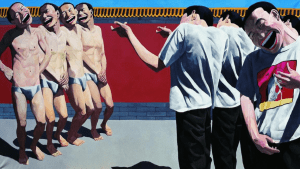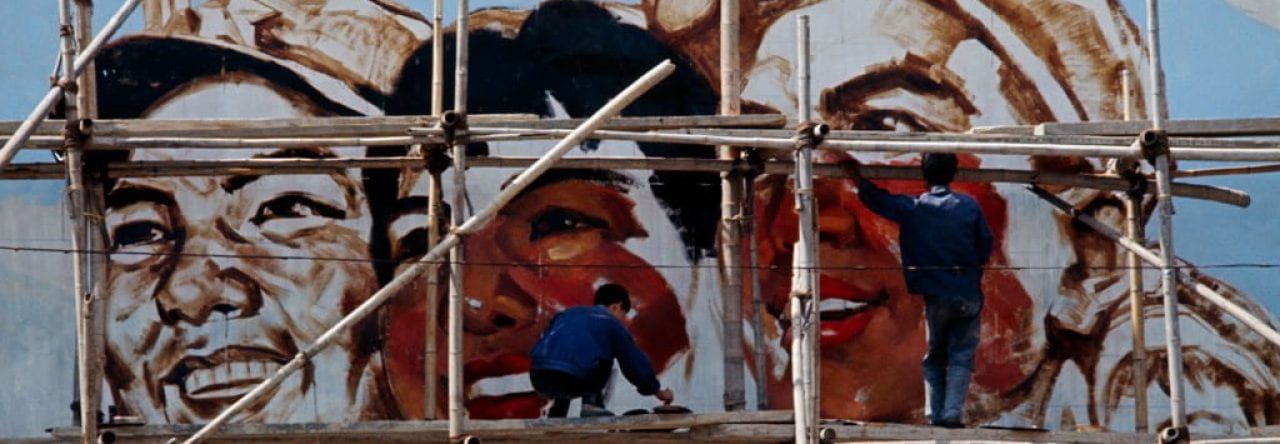
This piece by Yue Minjun has clear inspiration from the Tiananmen Square Massacre of 1989 where the military opened fire on protesters, killing hundreds. As with the majority of Minjun’s works, everyone is depicted with a massive grin. I see this a representing how the people under the CCP had to always appear happy with the state of their country even this wasn’t true because if you expressed your dissatisfaction you would be killed. As stated in an interview in 2015, Yue Minjun says “In my work, laughter is a representation of a state of helplessness, lack of strength and participation, with the absence of our rights that society has imposed on us. In short, life. It makes you feel obsolete, which is why, sometimes, you only have laughter as a revolutionary weapon to fight against cultural and human indifference”. Knowing this, it can be interpreted that with nothing the victims of the Tiananmen square massacre could do nothing but smile. I also find it interesting that the people who are supposed to be the shooters are also smiling, possibly showing that the military had to shoot because if they did not prove their loyalty to the CCP, they could just as well share the same fate. To Minjun, Laughter is almost like a form of mockery of the CCP for how ridiculous their actions are and to show that despite being powerless, the victims can still demine their killers with one final act.


Jun
Nice reference to the interview. I have only managed to gather articles and scholarly journals for my blog post. I will try to incorporate an interview in my future blog posts.
Julian Zapata-Hall
Great work! Really liked your analysis. Had previously seen the piece but was unsure about the origin and relevancy of the work. The prevalent laughter in a figure depicting an execution is shocking to the viewer and makes the piece incredibly captivating. The color, cartoonish nature and exaggerated positivity in the piece makes . Also, I appreciate that you included the artists explanation of the piece. I intended to replicate that in my own visual analysis. However, I think even with his explanation, there is still room for interpretation for the laughter and its full representation in the piece. Your visual analysis helped me observe my piece in the light of the Chinese artist better.